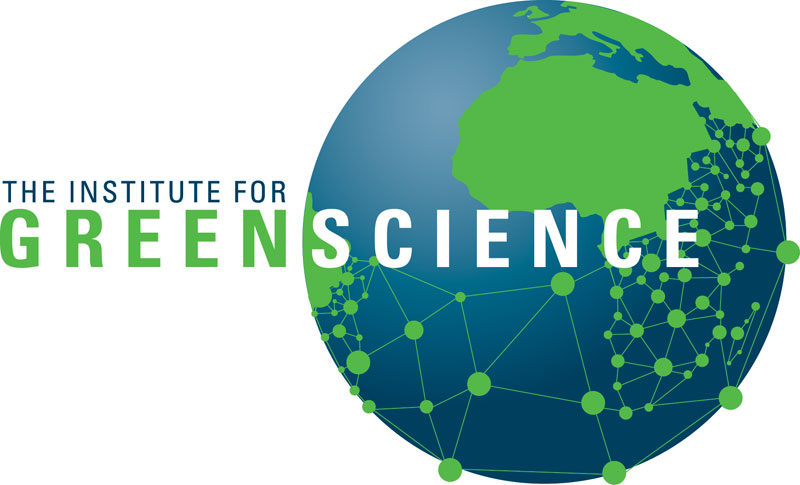Courses at Carnegie Mellon University
Chemistry and Sustainability: 09-510 (9 units) and 09-710 (12 units)
This course aims to educate students in the foundations of systematic leadership for building a sustainable world. Many sustainability challenges are associated with commercial chemicals and with operational modes of the chemical enterprise. For scientists, effectiveness in solving the technical challenges and redirecting cultural behavior is the defining substance of sustainability leadership. The course aims to challenge students to analyze and understand the root causes of unsustainability, especially in the technological dimension, to imagine a more sustainable world and to begin to define personal leadership missions. Students will be introduced to sustainability ethics as the foundation stone of transformative sustainability leadership, to the Collins “Sustainability Compass” and “Code of Sustainability Ethics” and to the Robért/Broman “Framework for Strategic Sustainable Development (FSSD)”as powerful guiding tools. The Collins “Bookcase of Green Science Challenges” organizes the technical content. It systematizes the major chemical sustainability challenges of our time: clean synthesis, renewable feed-stocks, safe energy, elemental pollutants, persistent molecular toxicants and endocrine disruptors. Focal areas will be the technical, toxicological and cultural histories of elemental and molecular pollutants and endocrine disruptor (ED) science—EDs represent the single greatest sustainability challenge of everyday chemicals. The graded substance will take the form of take-home work. Students will primarily read key books and articles and will summarize and personally evaluate the material in essay assignments. The course is intended for upper level undergraduates and graduates. There are no other prerequisites. The class is limited to 25 students. The 09-510 assignments are common to both undergraduate and graduate classes offerings and 09-710 students will engage in additional projects.
Course Syllabus (2015)
The principal aims of C&S are that students should be able to:
Articulate how sustainability ethics applies to chemistry and know and relate the arguments and logic of Hans Jonas as laid out in the early chapters of The Imperative of Responsibility (Jonas, 1984).
Know how to be guided by the Robèrt-Broman Framework for Strategic Sustainable Development and the Technology-Sustainability Compass (TSC, developed in C&S) based upon these for evaluating technologies for sustainability—the workings of the latter have been described in a webinar by Professor Collins.
Understand the science of persistent, bioaccumulative and toxic pollutants (PBTs) and be able to think creatively about reducing and eliminating these.
Give accounts of the long-term histories of pollutants such as lead and dioxin, of the impacts on human health and the environment, of the underlying mechanistic toxicity, and of the cultural barriers that blockaded for decades attempts to deal reasonably with these pernicious assailants of sustainability.
Discuss scientific understanding of the many other toxic products of the halogen industries and articulate the history of organohalogen pollution.
Identify and describe examples of inspired sustainability leadership in the chemical and allied enterprises.
Hold an educated viewpoint concerning how people who have controlled the chemical and allied enterprises have sometimes moved our civilization away from sustainability and on how people we now recognize as sustainability leaders have dedicated their careers to vanquishing the erosive behavior, these viewpoints being developed by studying histories of sustainability errors, malfeasance and heroism found in such sources as Markowitz and Rosner’s Deceit and Denial, Bill Moyers' Trade Secrets and Stephanie Horel’s Endocrination.
Understand how to define green chemistry and articulate its unifying concepts, including (i) the Anastas and Warner Twelve Principles of Green Chemistry, (ii) the C&S Three Principles of Green Chemistry and Bookcase, and (iii) the FSSD Four Sustainability Principles, and evaluate the strengths and weaknesses of each as foundations for a field of chemistry that is aimed at securing sustainability and protecting life.
Identify and explain the major sustainability challenges of chemicals within and beyond green chemistry, know the progress to date in dealing with these and postulate what it will take to evolve full solutions in both the technical and cultural domains.
Explain especially what endocrine disruptors (EDs) are, why EDs represent major health and environmental hazards, and why the Tiered Protocol for Endocrine Disruption (TiPED) is the current quintessential example of interdisciplinary research for advancing green science.
Reflect philosophically on individual and collective motives that lead to the adoption and commitment to technologies that are obviously harmful to health and the environment and think creatively about how to lead individuals and society to think better about advancing sustainability.
Know the precepts of the Code of Sustainability Ethics for Leaders (COSEL), developed in C&S, and consider how these can be helpful in building a career in sustainable development, and
Articulate a personal appraisal of what the role of the university should be in advancing sustainability.
